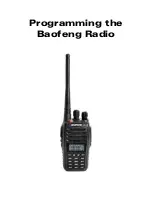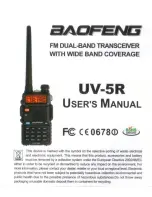
25
Date Code 20210405
Instruction Manual
SEL-FT50/SEL-FR12 Fault Transmitter and Receiver System
Device Installation
Setting SEL-FR12 Receiver Gain
The SEL-FR12 allows you to set the internal gain of the device. The device can
be set to either Low Gain or High Gain for each trio of SEL-FT50 devices. The
purpose of Low Gain mode is to ensure that you do not overdrive the receiver
(which would decrease point link reliability).
For three-phase installations, the SEL-FT50 Fault Transmitters are installed in
groups of three, and the received signal strength from all members of a trio is
identical. The received signal strength between multiple trios is usually different
because of path differences. To accommodate the range of reception signal
strengths, an attenuation setting is provided for each trio. See
Table 4
for trio
assignments.
The SEL-FR12 works equally well with messages received directly from an
SEL-FT50, and one or more SEL-RP50. In bench test situations, stay below the
SEL-RP50 maximum received signal strength specification by spacing the
SEL-RP50 at least 50 feet (15 m) from the SEL-FT50, and more than 25 feet
(7 meters) from another SEL-RP50 with the same Unit ID.
When you first install the SEL-FT50, set Control Switches 11–14 to the Low
Gain position and use the RSSI feature (see
Receive Signal Strength Indicator on
page 26
) to measure the receive signal strength for each trio. If the receive signal
strength shows 12 LEDs, leave the trio in Low Gain mode. If RSSI mode is
showing less than 12 LEDs illuminated, switch to High Gain mode. Switching to
High Gain should illuminate more LEDs, corresponding to a higher RSSI.
The RSSI feature also indicates signal strength from an SEL-RP50. Generally the
RSSI reading will be highest from the SEL-RP50 located closest to the
SEL-FR12 (with the largest Repeater ID number). When the SEL-FR12 can
receive messages from multiple SEL-RP50s with the same unit ID, it displays the
RSSI from the last message received, which will usually be from the nearest
SEL-RP50, with the largest Repeater ID.
During low line current conditions (less than 40 A), the SEL-RP50s take up to 30
minutes to start repeating Link messages. For a newly energized or newly-
installed system, this delay is repeated for each increasing Repeater ID. If the
RSSI reading is examined during this time, low readings may be initially dis-
Figure 19
Serial Port Settings Selection
Table 4
Trio Assignments
Node (Three-Phase)
Unit ID Assignments at Each Location
Trio Number
1
1, 2, 3
1
2
4, 5, 6
2
3
7, 8, 9
3
4
10, 11, 12
4
NOTE:
There is no transmitter power
adjustment selection in the SEL-FT50
nor the SEL-RP50.
















































